The Japanese are still one of the worst people in the world.A look at your diet shows why we can benefit from this.
If we want to lose weight, we often start with strict diets, which are not carried out for all strict rules in a few days or weeks.In fact, it's so easy: let's take a look at the worst people - in Japan.
There they treat food with respect and enjoy it.
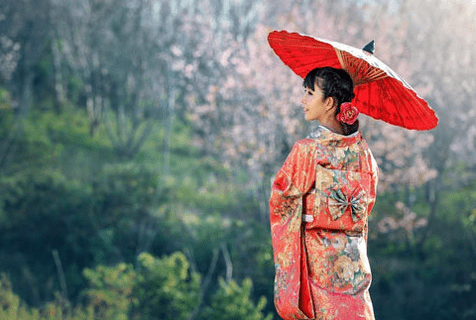
Japanese nutrition
Travel to Japan.The choice of products
ManySquirrel: The main ingredients of the Japanese diet are fish, rice and vegetables.As well as soy and fruits.
On closer exam this is like
- rich in protein,
- low -fat
- And the gluten -free diet.
- FishContains many omega-3 fatty acids that are useful.
- VegetablesThey contain the necessary vitamins and fill the stomach well.
- Don't be afraid of carbohydrates: At first glance, it seems that an incredible amount of white rice is eaten in Japan with the ubiquitous carbohydrate phobia.Obviously, this is not very harmful to the error surfaces.riceIt does not contain any gluten and contains little fat.
- Soupand fermented dairy products.That she hardly eats in Japan isDairy.
- AlthoughGrainSometimes they are used in the form of pasta, for example, they are not the main food.
- MeatThey eat much less than fish.
- But the Japanese likeEnzymes productsLike miso or kimchi.They contain probiotics that are useful for the intestine.This in turn plays a major role in losing weight.And another thing that we can accept from the Japanese: they also eat a lot of soup for breakfast.
Travel to Japan.Cooking methods
In Japan, the food is mainly steamed, stew or grilled.All of these types of preparation are carried out almost without fat.
Of course there is also frying feed, for example, a popular pace, but then it is only used as a side dish in small quantities.In Japan, the presentation and the design of the court is also important.Asian products are useful, tasty and contribute to weight loss.
In Japanese, consciously eat
In Japan, food is regarded as independent measures that you have to concentrate on.The food should be eaten slowly and consciously.Therefore, by the way, "or" go "is not eaten.That means neither during a walk nor in the U -Bahn nor during work or on television.Of course, this is not forbidden, but in fact a diet, especially when losing weight, should be carried out consciously.With this method for absorbing food, a feeling of saturation can be felt.Since working days and school days in Japan can be very long, this also means that there are longer breaks for food.AlsoPartsLess in Japan.You won't see any plates overloaded with food.
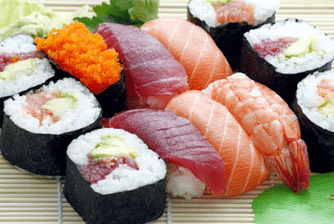
Weight comes with fast food
Slow food (slow food)In Japan in trend.If you imitate this, you can deliberately lose weight and not hunger.However, it should be noted that more and more new trends appear in Japan: for example fast food.The previous habits in the food disappear ...
This has consequences: the Japanese also recover when they say goodbye to their traditional meal!Nevertheless, the country also fights quite hard so that Japan took decisive measures against the causes of overweight in 2009.Medical tests are carried out regularly in all communities and large companies.Companies should pay more for health insurance if their employees are overweight or have high blood pressure, high blood fat or an increased blood sugar.In view of such measures, many Japanese prefer to withdraw with fish instead of toasts to Miso-Supa in the morning.
How long does the Japanese diet last?
Time and possible weight loss can vary.The Japanese diet should be observed at least four weeks.This time is enough to stimulate fat burning.There are people who have lost3To8A kilogram in four weeks with a diet.The result can be increased even more if you start a sports program.
- Many vegetables and fiber are used during nutrition.The diet plan offers1200 caloriesper day.
- Mainly rice, fish and vegetables are proposed.
- Drinks: lots of green tea and water.
- Take care of fresh cooking - no finished products.
- Take sports or train for perseverance.
- Plan enough time to cook.
Consult a doctor.- Changes in nutrition can lead to diseases.The reasons are mainly mental nature and due to low -calorie consumption.Contact a doctor if the symptoms are preserved.
Advantages of Japanese nutrition
Japanese nutrition- This is a healthy mixed diet.A lot of attention is paid to fresh products and a balanced composition of dishes.
The disadvantages of Japanese nutrition
- Low calorie consumption can lead to a feeling of hunger and discomfort.The total calorie consumption can still be too low for people with overweight.
- Cooking fresh dishes can be boring for those who are used to feeding fast food.
- Spontaneous visits to a café or restaurants with friends are confronted with the choice.
- Diet requires a lot of perseverance.
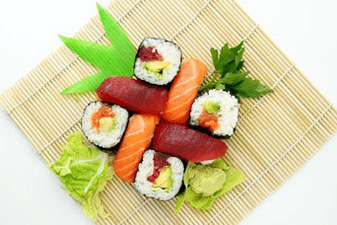
But those who successfully end the Japanese diet are rewarded with more loss of overweight.
If you want to see great successes, make a sports program.Make sure you consume enough protein.Otherwise you cannot increase muscle mass.In the worst case, they lose their muscles.Evil sport and other big loads should be avoided.
Japanese nutrition.Menu
Everyone should be fresh.The dishes are beautifully cooked, they can play with flowers.The food and enjoyment of food (slow absorption of food) are also very important.
Breakfast
- 1 mandarin
- 1 cup of miso.This typical Japanese soup gives a lot of energy, but is low in fat.Incidentally, it consists of fish broth, tofu, algae, miso (flavored soy paste) and green onions.The recipe below!
- 1 cup of green tea
Dinner
- 1 plate of land (raw fish with rice), with soy sauce
- Cup of pasta with mushrooms
- 1 apple
- A cup of green tea
Dinner
- 1 part sashimi (a dish from other fish), soy sauce and basabi (be careful, this paste made of water is very acute)
- 1 cup of whole grain rice
- 1 orange
- A cup of green tea
In addition, exercises are recommended (ride or ride a bike) as well as the pleasure of the simple, small things.
And now about "good old times" - let us make a time in time
The Japanese are among the healthiest people in the world with the greatest long -term expectancy in which they remain harmful due to the exemplary diet.Nippon.com has currently published a study in which she justifies the reasons for the good health of the Japanese with her diet.Nutritionists have examined Japanese's food habits for more than half a century.Result:In 1975 the Japanese culinary habits were estimated by the highest assessments.
Why was the 1975 Japanese nutrition seen as a model for diets?
The Japanese culture has been influenced by the western world for many decades, especially the western power habits in the country and also brought diseases such as atherosclerosis and diabetes.The study in which the Japanese diet over mice has been tested for several decades - 2005, 1990, 1975 and 1960.
Result:The mice had had the best health state with a diet plan in Japan since 1975.This group of mice had the lowest risk of diabetes and a healthy liver.
Cause:The average Japanese diet plan contained a large proportion of vegetables, fruit, algae and seafood this specific year.In addition, nutrition in 1975 was predominant by various methods of fermented spices and a greater variety of herbs.In addition, the consumption of juices and sweet refreshing drinks in Japan was not as common as today - both drinks are considered harmful in large quantities of health.
After the 48-week time, the researchers found that the mice that were driven by the 1975 Japanese diet were older and had a better memory than mice that observed the 2005 diet.
But is it possible to transmit these results to people?A study “Research Ethics Committee” of the Tōhoku Uni, Sendai carried out by Tokhoki University Studies Committee in Sendai, Japan, Japan, has shown that the 1975 diet has the same advantageous influence on humans.And a group of participants who followed the diet from 1975 during the period of 28 days exceeded the indicators of those who followed the 2005 food plan.In the first group, cholesterol was lower and the risk of diabetes.In combination with one hour that trains three times a week three times a week, the 1975 diet also reduced stress and increased perseverance in the group of participants between the ages of 20 and 30.In general, the Japanese style nutrition can also help reduce the level of the lipid in the blood and in visceral fat, which is considered harmful to health due to its metabolic activity.
If we summarize, we can say thatMakes the Japanese 1975Compared to modern nutrition in Japan - and typical of the West, food habits are more useful in many ways today.This healthier lifestyle and this diet reduce the risk of diabetes, cholesterol levels in the long run, the blood lipids and visceral fat reduce, weight loss is a positive side effect.
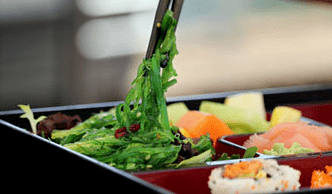
The diet from 1975, together with regular physical exercises, contributes to weight loss.
- Diversity:The daily menu usually consists of many small different dishes served with soup and rice - instead of a large main court.
- Preparation:The most popular three types of dishes that were prepared in 1975 were cooked, steamed or raw and also grilled.Freedom heat and roast were used less frequently.This form of preparation has a consequence of the fact that the most important nutritional values in heat are lost.For example, greasy fish such as CSB contains important omega-3 fatty acids.After the roast, the fish contains only a third of the initial fat compared to raw fish like Sashim.
- Ingredients:The 1975 diet is particularly rich in soybean products, seafood, tubers and green and yellow vegetables (including Rnicons), fruit, algae, mushrooms and green tea.Eggs, dairy products and meat were also consumed in 1975, but only in moderate quantities.
- Spices:Instead of salt and sugar for taste, soy sauce, vinegar and sake, fermented spices and fish broth are used.
Soup miso- This is a Japanese national dish that is quickly prepared and very aromatic.The main recipe contains very few ingredients - you can enrich it at will.Miso-Sup is often eaten for breakfast in Japan, but also as a snack or side dish.With filling, the soup becomes the main course.
As a base for a soup you only need two ingredients:
Mizopasta:This spicy paste consists of soybeans and - depending on the variety - various grain such as rice or barley.The ingredients are salted and fermented in barrels with the help of the so -called so -called so -called molds from Coji.There are bright and dark, sweet and sharp Miso pastes.The choice of diversity has a big impact on the taste of the Miso soup.Mizopasta is considered very useful because it contains probiotic lactic bacteria that are formed during fermentation.Dasha:The Japanese fish broth is prepared from Seang-Tang combat and dried bonito flakes (type of mackerel or tuna: "Katsuo-Bushi"-"Katsuo-Busi").If you want to cook a vegetarian miso soup, you can use dried Shiitaka and possibly mushrooms from Maitaka or Enoki instead of bonito flakes.
Miso soup: Reason recipe
For four small portions of Miso soup you need the following ingredients:
- 750 milliliters from Dasha
- About two or three tablespoons of Miso-pasta
Use the Miso Post of your choice: In addition to soy, Shiro-Miso also contains rice and has a rather soft and sweet taste.The darker varieties of Miso, such as Genmai or Hatcho Miso, are spicy.
How to cook miso soup
-
Warmth Dasha's broth - but don't cook.
-
Skip the Miso Pass through the sieve and mix well with the broth.First use only part of the crowd because Paste Miso has a very salty taste.Try soup and then add more Miso paste if necessary.
-
Add the ingredients of your choice in a MIS sup in a few minutes before serving.Serve the finished soup in bowls.Incidentally, the soup in Japan is eaten with sticks to eat, and then the broth is drunk from the cup.
MISO soup recipe: additives and spices
You can prepare various ingredients for your soup.In Japan, the fact that the ingredients are cut evenly is paid a lot of attention - so that the finished soup looks very nice.Here are some examples to enrich your soup miso:
- Boiled rice or paste (for example noodles from buckwheat dogs)
- Tofu cut by dice
- Onions or green onions, cut into thin rings
- Mushrooms, finely chop
- Kohlrabi, finely chop
- Snow sections
- Blattspinat, Park Choi or Swiss chard
- Fried vegetables such as broccoli, pepper or carrots
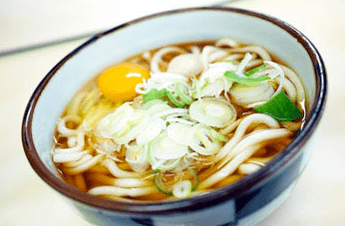
Although Misos soup itself is very sharp, it can be seasoned with several spices.For example:
- Soy sauce
- A bit like lime
- Japanese Wostershire -Sauce
- A few drops of sesame oil
- A small powder made of ginger and / or chili pepper.
- You can also cut fresh ginger and / or pepper into thin slices and leave it in a soup.
Advice:For many ingredients you have to go to an Asian business, but in regional markets you can buy fresh onions, mushrooms, kohlrabi and co.
Tofu and other soy products are now also manufactured in other countries.
Japaneseeat:
- Rice, fish (raw and cooked), vegetables, everything and algae
- Small portions
- Different foods (up to 30 different per day)
- For breakfast soup, fish, rice, vegetables
- Fresh seasonal raw products
Almost no desserts eat, don't eat bread
Drink mainly green tea
Not fried in oil, just use a little vegetable oil for roasting
You go a lot and ride your bike
Top three products
Rice/fish (algae)/soy (tofu)
Drink: green tea
And another secret from Japanese
Would you like to get thinner in the waist of 12 cm?- If so, do the following breathing exercises!
Important!
- Accept every day!
- Put before breakfast!
- Never hurry!
- Feets sit at a comfortable distance.The knees "of course look ahead.
- If you move the weight of the body into the hind leg, smooth the front.
- Inhale for 3 seconds.
- Exhale 7 seconds for 7 seconds.Relax muscles.Rib your hands.
The movement does 3 minutes at the beginning and then increases the time to 10 minutes.













































































